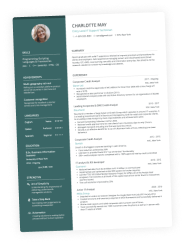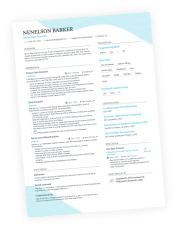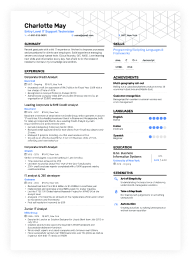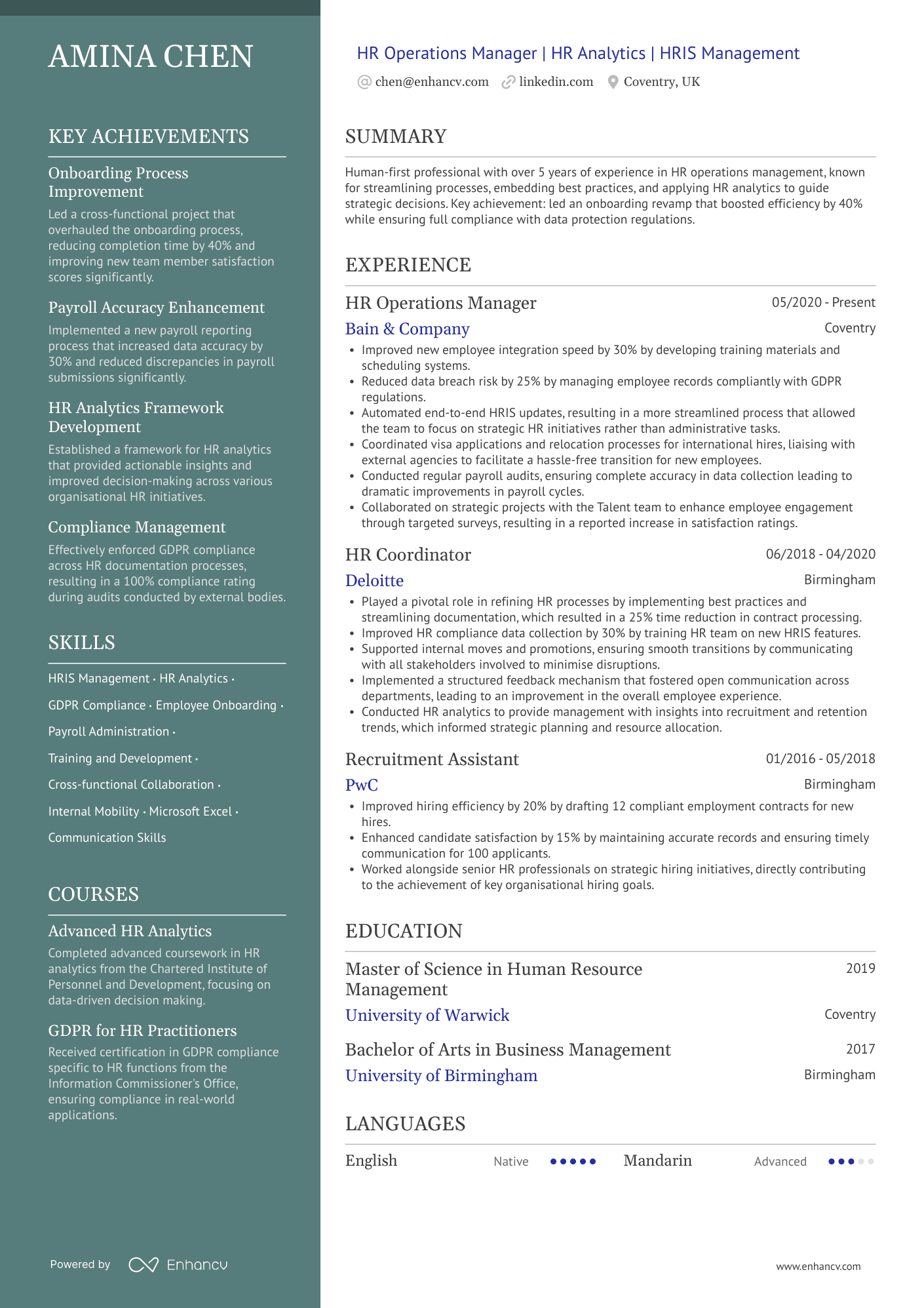You’ve worked hard through school, pushed yourself at college or sixth form, and put in all-nighters to ace university. Those grades and qualifications are proof of your blood, sweat, and tears, but are you showcasing them properly when applying for jobs?
When it comes to writing your CV, the education section often feels like the easiest bit to get right. But it’s also one of the most misunderstood. Should you put your GCSEs on a CV if you’ve got a degree? How do you list A levels, predicted grades, or even an unfinished qualification? There are plenty of questions that may have you stumped.
And, it all matters. How you present your education can influence whether you get called to interview. Whether you’re a recent graduate, a career changer, or a seasoned professional with years in the workplace, you’ll want to get this right.
In this guide, we’ll take you through exactly what to include education-wise, where to put it, how to format it, and the common mistakes to avoid. And, as a bonus, we have some examples.

Key takeaways
- Always give education its own dedicated section so recruiters can find it easily.
- Use reverse chronological order, starting with your most recent qualification first.
- Include the basics: institution, qualification, subject, grade/classification, and dates.
- Tailor the level of detail to your career stage (more detail if you’re a graduate, less if you’re experienced).
- GCSEs and A levels can be summarised once you have higher qualifications.
- Advanced credentials and certificates can go in your education section. However, if you have a few, they may deserve their own place.
Wondering whether your CV hits the mark? Check out our free CV Checker.
Is your CV good enough?
Drop your CV here or choose a file. PDF & DOCX only. Max 2MB file size.
Let’s dive in, and uncover all you need to know about education on your CV.
What is education on your CV?
Education on your CV is what it says on the tin—any formal qualifications you’ve gained. Mostly, we’re talking about the certificates you got at school (GCSEs), your college or sixth form, and at university (your degrees).
All of the above should answer the question: “What have you studied, and how does it prepare you for this role?”
Put simply, hiring managers want to know how your education has led you to this particular career. Get it right, and your education highlights the effort you’ve put in and makes sure your hard-earned qualifications are recognised by employers.
Where to place education on a CV—explained
Now that you know what counts as education, the next step is deciding where it should go on your CV. In most cases, you should put it in its own section. This is a standard part of any CV and helps employers find your qualifications quickly.
Include it in a dedicated section if it's:
- Relevant to the job you’re applying for
- Formal education from school, college, or university
- A recognised qualification in the UK

When shouldn’t you create a dedicated education section?
If you followed a non-traditional education path or got the bulk of your qualifications through training, an education section may not be the best move. Instead, you can place your credentials in a training and certifications section.
Where to put your education section
Where you include this section on a CV depends on your stage of career and the type of CV you’re using.
For example, in a traditional reverse chronological CV, the format most UK employers expect, work experience usually comes first, followed by education.

Get the format right from the start
Most British hiring managers, and the Applicant Tracking Systems (ATS) many companies use, expect a CV to follow reverse chronological order. So, your most recent achievements should appear at the top of their respective sections.
Use this standardised format. Your education will be exactly where the reader expects. That means that they can quickly scan your CV and get the information they need in seconds.
Here’s a strong example of a reverse chronological CV, created with Enhancv’s AI CV Builder:
Nine times out of ten, where you place your academic background is determined by how much work history you have.
Here’s a quick breakdown:

Where education goes on a CV
- Entry-level or changing careers: Put education near the top to show you’ve got the right foundation, even with limited experience.
- Experienced professionals: Move education to the end—your work history carries more weight.
- No formal qualifications: Highlight courses, certifications, or training instead to show relevant knowledge.
Most recruiters will scan your work history first. The main exception is if you’re a school leaver, college student, or graduate—then it makes sense to lead with education. This also works well with skills-based or combination CVs, where you can place education and skills above experience to highlight your strengths.

Give certifications their own space (when it counts)
If you’ve got several certifications or training courses that are directly relevant to the role, place them in a separate section so they stand out. But if it’s just one or two, you can simply list them under education.
Next up, let’s talk about the right way to write this section.
How to write your education section
Your education section has to do some heavy lifting. It’s not enough to simply state what qualifications you have. The hiring manager wants the full scoop.

What to include in your education section
- Institution: Start by writing out the full name of your school, college, sixth form, or university. You can also put the location of the institute.
- Qualification and subject: Next, include the type of qualification (for example, GCSEs, A levels, degree, etc.) and the subject.
- Grade or classification: For A levels and GCSEs, add your grades if they are “good” (i.e. A-C, or 9-6). If they’re lower than that, you can just put the subjects. For degrees, be specific about the grade you got, and any honours.
- Dates: Add the date (the year is enough) you completed your qualification, or the date you are projected to complete it.
That’s the main information every hiring manager expects to see. Make sure you use the reverse chronological order, starting with your most recent qualifications at the top.
Do you always have to include your grades?
Don’t leave out core qualifications, such as GCSEs as this can be a red flag for hiring managers. However, if you’ve taken supplementary qualifications—and scored poorly—it may be better to leave them off entirely, or keep details to a minimum.
Grades aren’t everything. Compensate by highlighting any transferable skills or professional development you’ve done instead. While it’s not worth hiding your poor grades, you should make it clear that you have other talents to bring to the table.
How much detail you give depends on your career stage.
If you’re a graduate or early in your career, you’ll want to expand a little. This could mean listing relevant modules, your dissertation topic, or projects that show off skills linked to the job (as we’ve shown in the example below).
However, when you’ve built up a few years of work experience, you don’t need as much detail. A short entry with your degree, classification, university, and dates will usually do the job.
Let’s take a look at a good CV education example:
- •Dissertation: Women’s Voices in Post-War British Fiction
- •Relevant modules: Modernist Literature, Creative Writing, Shakespeare Studies
Keep it simple and only include details relevant to the job. (Your Shakespeare module won’t help you land a finance role.)
Writing this section of your CV doesn’t have to be hard. Use the following golden rules to guide you when you get started.

Writing tips for your education section
- Use the standard order: List your credentials in reverse chronological order. This makes it easy for the hiring manager and the ATS software to scan your application.
- Adopt a clear date format: You can either include both the month and year you graduated (Jun 2021), or just the year (2021). Either way, keep it consistent throughout your CV.
- Decide how far back to go: Your formal qualifications can be included on your CV, even if they date back up to 20 years. If they’re older, you can still list them—just leave out the date and year of graduation to reduce the risk of age discrimination.
- Avoid paragraphs of text: This CV section needs to be skimmable. Don’t include any paragraphs. At a push, you can write a bullet point or two about specific coursework, modules, or standout achievements.
- Tailor it to the role: Don’t use a one-size-fits-all approach. Check the job criteria, and include the education that best aligns with its demands.
- Use a title or an acronym (not both!): When listing degrees, you can either use acronyms or the full titles—just make sure it’s consistent. For example, you can write either BA or Bachelor of Arts; BSc or Bachelor of Science.
Now, we can move on to the different qualifications you may feature.
Types of education to include on a CV
Of course, not every qualification needs the same level of detail. How you present your education depends on what stage you’re at and what matters most to employers.
Let’s take a look at the different types of education you can include:
GCSEs
If you’re early in your career and don’t have any higher qualifications, you’ll need to add your GCSEs with the subjects and grades. This is especially important for English and maths, which are often vital for entry-level jobs in the UK.

Don’t list every GCSE subject
You can keep things brief, only name-checking your most important subjects. For example, you may write: “9 GCSEs including Maths (B) and English (A).”
Once you’ve moved into higher education or gained years of work experience, a summary of your grades is usually enough. For instance: “9 GCSEs including Maths and English, grades A–C.”
But what if your grades were numbers, not letters? That’s because Ofqual introduced a new grading system in 2020. Instead of the old A*–U scale, GCSEs are now graded from 9–1 (with 9 being the highest) and U meaning “ungraded.”
If you’re a younger job-seeker, you’ll have numeric results, while older candidates may still have lettered grades. Both are accepted by employers, and hiring managers in the UK are familiar with the change, so don’t worry if your grades look different to someone else’s.
Here’s an example of how you may include GCSEs in your education section:
- •Maths, English, 7 further subjects
- •Grades: A–C (Maths B, English A)
You don’t have to add an explanation of the topics and modules you covered. However, if you completed coursework that is relevant to the vacancy, you can bullet point it.
A levels (or equivalent)
If you’ve completed A levels, include them in your education section with both subjects and grades. For example: “A Levels: Biology (B), Chemistry (C), Psychology (B).” Hiring managers generally expect to see full A levels, but you generally don’t need to list AS levels separately.
That being said, if you completed an AS level (but didn’t get the full A level) and it’s relevant to the role, you can slide it in. For example, if you have a Business Studies AS level when applying for a finance position, you can add it as an extra line for that.

A level equivalent qualifications
A levels are a level three qualification in the UK. While they’re one of the most common, they’re not the only type. Let’s take a look at some alternatives:
- Access to Higher Education Diploma: Designed to prepare adults for university, this one is accepted by many UK universities as an alternative to A levels.
- Advanced apprenticeship: This is a work-based programme combining on-the-job training with study, equivalent to A levels.
- Level 3 Award: This award is a short course focusing on a specific subject or skill. It tends to be less extensive than a diploma or certificate.
- Level 3 Certificate: This is a qualification that provides more depth than an Award, often covering a subject in greater detail.
- Level 3 Diploma: Diplomas are a more substantial qualification than an award or certificate, offering in-depth study in a subject.
- Level 3 National Certificate: This is a vocational qualification equivalent to A levels, focused on practical skills and knowledge.
- Level 3 NV: An NVQ is a competence-based qualification showcasing your practical skills and knowledge in a workplace setting.
Whatever educational path you took, now’s the time to include it on your CV. Be clear about the institution, subject, and grades. If you completed your A levels at the same place, you can group them together.
Here’s a CV education example for inspiration:
- •Maths, Economics, Geography
- •Grades: Maths (A), Economics (B), Geography (B)
Follow the CV education section format shown above and you’ll present your qualifications clearly, making sure employers get the right message straight away.

Should you always include secondary education?
Sometimes—but again, this largely depends on your career and education level. If you’ve got multiple degrees (such as a bachelor’s and master’s degree), your GCSEs are unlikely to matter much. The same goes for your A levels, unless they are directly relevant to the role.
You can often just summarise your GCSEs (by saying “9 GCSEs including Maths and English, grades A–C”) instead of listing every subject.
Undergraduate degrees
When it comes to your bachelor's degree, the process is straightforward. Include the subject, university, dates, and classification (First, 2:1, 2:2, Third). You can also list any honours, key modules, or your dissertation title—so long as it’s relevant.
If you have a degree, you don’t always have to add your GCSEs or A levels to your education section. However, for some roles—such as teaching and civil service jobs—you might need to. Always read the job description thoroughly and make sure you know what’s expected.

How much do degrees matter?
Having a degree should instantly increase your chance of getting employed. However, research from Indeed found that only 14% of UK job postings specifically mention any type of formal education. That may be because many British employers practise skills-based hiring, where practical experience and competencies often weigh more heavily than academic credentials. In other words, your degree is valuable, but it’s your skills and how you apply them that are likely to get you shortlisted.
Check out our example of how to list a degree on your CV:
- •Dissertation: The impact of monetary policy on UK housing markets
- •Relevant modules: Microeconomics, Econometrics, Behavioural Economics
Postgraduate degrees
Have you completed a Master’s, PhD, or PGCE? Postgraduate degrees add real weight to your CV and should always be included. List them in the same way you would an undergraduate degree, i.e. with the subject, institution, dates, and the final grade.
When you add a postgraduate qualification, be sure to also include your undergraduate degree. This move gives employers the full picture of your academic background and shows the progression of your studies.
Take a look at how you can do just that:
- •Dissertation: Machine learning applications in financial forecasting
- •Key modules: Advanced Programming, Big Data Analytics, Artificial Intelligence
- •Dissertation: The impact of monetary policy on UK housing markets
- •Relevant modules: Microeconomics, Econometrics, Behavioural Economics
Professional qualifications
It doesn’t end there. Professional bodies carry significant weight in the UK job market. Examples of qualifications include CIMA, CIPD, and PRINCE2. You can include these in your education section or, if you have several, list them under a separate heading of their own.
Take a peek at our example education section below:
- •Dissertation: The impact of monetary policy on UK housing markets
- •Relevant modules: Microeconomics, Econometrics, Behavioural Economics
- •Certified in structured project management methodology, covering initiation, planning, execution, and closure
Do you have a whole gallery of certificates on your wall? Great stuff! Learn more about how to list certificates on your CV in our full guide.
Bonus: Academic awards and honours
Did you excel academically? If so, don’t hide your achievements. Instead, show them off on your CV. For some high-level roles, these could be the difference between landing an interview and getting rejected.
List your degree as we’ve already covered above, but be sure to add a bullet point or two for your awards and honours. Bonus points if the award specifically aligns with the position you’re going for. This is a quick way to add extra value to this section.
- •Dissertation: The impact of monetary policy on UK housing markets
- •Relevant modules: Microeconomics, Econometrics, Behavioural Economics
- •Awards & honours: Dean’s List for Academic Excellence (2019, 2020); Economics Department Prize for Best Dissertation (2021)
FAQs about listing education on a CV
You’ve got the basics down, but there might still be a few burning questions on your mind. Don’t worry… we’ve rounded up the most common ones and given you straight answers.
Should I list predicted grades?
If you’re still studying—or awaiting your results (fingers crossed!)—you can detail your predicted grades on your CV. Use a clear format like: “A levels, Predicted: AAB.”
Do I always need to include the date for qualifications?
Yes, you do. British recruiters expect to see dates for full transparency. This helps them pinpoint when you completed the qualification and, in turn, how relevant and up to date it is.
Do I need to explain an education gap?
Not usually. Taking a break from your studies is perfectly normal. For instance, you may have completed your A levels and taken a gap year to work before going on to degree level.
There’s no need to explain this to the hiring manager on your CV. However, if you’re concerned about it, you can add a short line in your education section or address it in your cover letter.
What if I didn't graduate?
If you didn’t complete your degree, it still holds value. You can add it to your education section (including all the basic details—the institute, degree title, and dates attended) but also write ‘incomplete’ next to it. If you earned a significant number of credit hours, include that too.
To add more weight, list any standout coursework or modules as bullet points below the main info. This approach shows employers what you learned and how far you progressed.
Final word
Your education section doesn’t need to be complicated, but it does need to be accurate, and tailored to your stage of career. Whether you’re listing GCSEs as a school leaver, highlighting a dissertation as a graduate, or adding a degree, keep it simple.
Use the advice we’ve shared in this guide to get moving. Ready to get started? Formatting your CV couldn’t be easier than with our drag-and-drop CV Builder tool.




